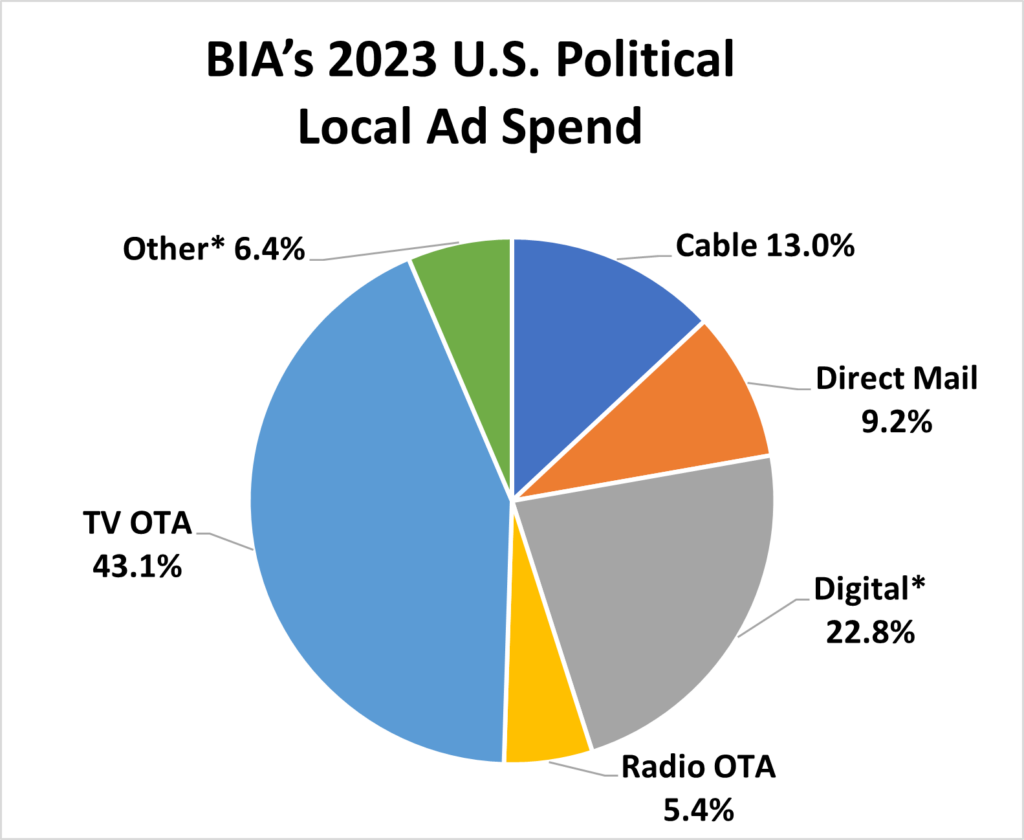
The same week that traditional broadcast and cable television viewership’s rapid and steady decline reached a significant milestone, radio received more perplexing and somewhat embarrassing news about local political ad spend in 2023 as the industry readies itself for upcoming elections.
According to new data from BIA Advisory Services, OTA radio will only receive just 5.4% of the local political advertising budget, while traditional TV and Cable are estimated to get a combined 56.1%. Considering BIA’s estimate of $534 million being spent on political this year, it makes less sense that radio’s spend lags a staggering $270.7 million behind TV.

Nielsen’s Q3 2022 Total Audience Report revealed that radio’s total audience has surpassed television’s for the first time in media history. The average audience for persons aged 18-49 on radio has increased by three percent over TV.
Television’s reach has been dwindling, especially among the 18-49 age group, with a drop of 28% and a 56% erosion in time spent viewing since 2018. This decline amounts to an hour and a half less viewing time. Just this past week, Nielsen reported linear TV made up less than half of all TV viewing in July, constituting 49.6% combined for both broadcast and cable. This marks a record low.
Broadcast viewership dropped 3.6% in July, accounting for only 20% of all TV viewership, and cable viewing fell 2.9%, making up 29.6%. On a year-over-year basis, broadcast viewership slid 5.4%, and cable TV dropped 12.5%.
On the other hand, Edison Research’s 2023 Infinite Dial report indicates that 73% of adults aged 18 and older still listen to AM/FM radio.
The industry must recognize the opportunity presented by radio’s strong connection with voters and develop strategies to leverage this advantage. As the 2023 elections approach and spending on political advertising increases, the time is ripe for radio to assert its value and increase its share of the political advertising market.






Maybe if radio did what it wants everyone else to do . . market its product better, this wouldn’t be the case. We’ve learned a lot in the past few weeks on how radio is left behind because…”oh, yeah I forgot about that”.
What can radio do to get them to remember?
A lot of politicians, candidates, their advisors and agencies believe TV is radio with pictures- and the candidate has to been seen. Weird, because most of them aren’t very good looking people.